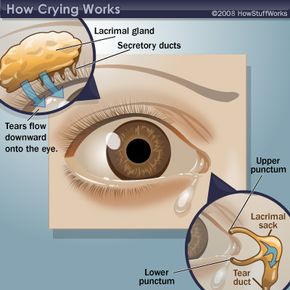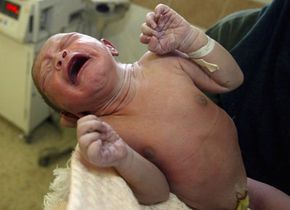Everyone's had one of those days when everything seems to go wrong. Your alarm fails to go off, you run out of gas on the way to work (for which you're already late), you spill coffee all over your desk and get stuck behind a 10-car pileup on the way home. At the end of the day, all you really want to do is take a hot bubble bath and crawl into bed. At this point, some of us resort to nature's tried and true stress relief method — crying.
Obviously, more serious and traumatic experiences can turn on the waterworks instantly, including births, deaths, illnesses (particularly of children or parents), infidelity and violent crimes. The most common causes of crying, however, are low-level stress or frustration and watching something sad on television. Perhaps this is why cable television networks run "Sleepless in Seattle" and "Beaches" so often. Could that be their way of forcing us to purge our emotions?
Advertisement
Either way, even the most masculine men cannot claim to be tear-free. As humans, we are hardwired to cry and are the only beings on the planet to shed emotional tears, with the possible exception of elephants and gorillas, although that has yet to be proven. So unless you're a saltwater crocodile, who cries only to excrete excess saltwater, chances are you have had a good old-fashioned cryfest at some point recently (it's OK to blame it on "Beaches" if you really want to — we won't tell).
Crying has been around for ages. History rumors Saint Francis of Assisi to have gone blind from shedding too many tears. One early researcher on the topic attributes this physiological response to the cremation of loved ones in prehistoric days. According to Paul D. MacLean, M.D., Ph.D., when our oldest ancestors cremated their deceased they were overcome by emotions, as well as the smoke that got in their eyes. Dr. MacLean believed that these factors caused reflex tears and forever connected death and tears in our psyches.
In this article, you will read about how crying is perceived in today's society and how men and women differ both physically and emotionally as it relates to shedding tears. We'll also discuss the physiology behind crying, the various types of tears and how crying may actually help you avoid and diagnose health problems.
Advertisement




